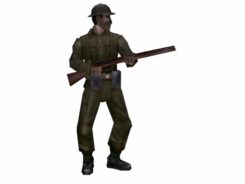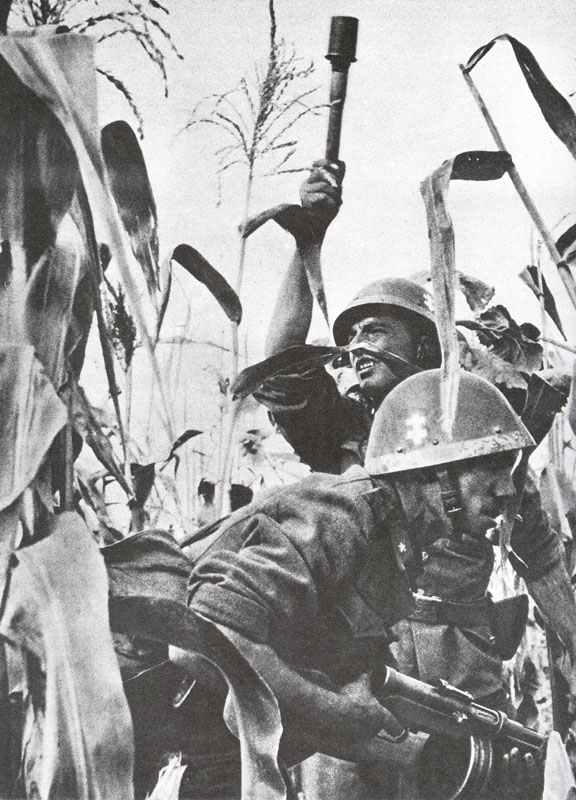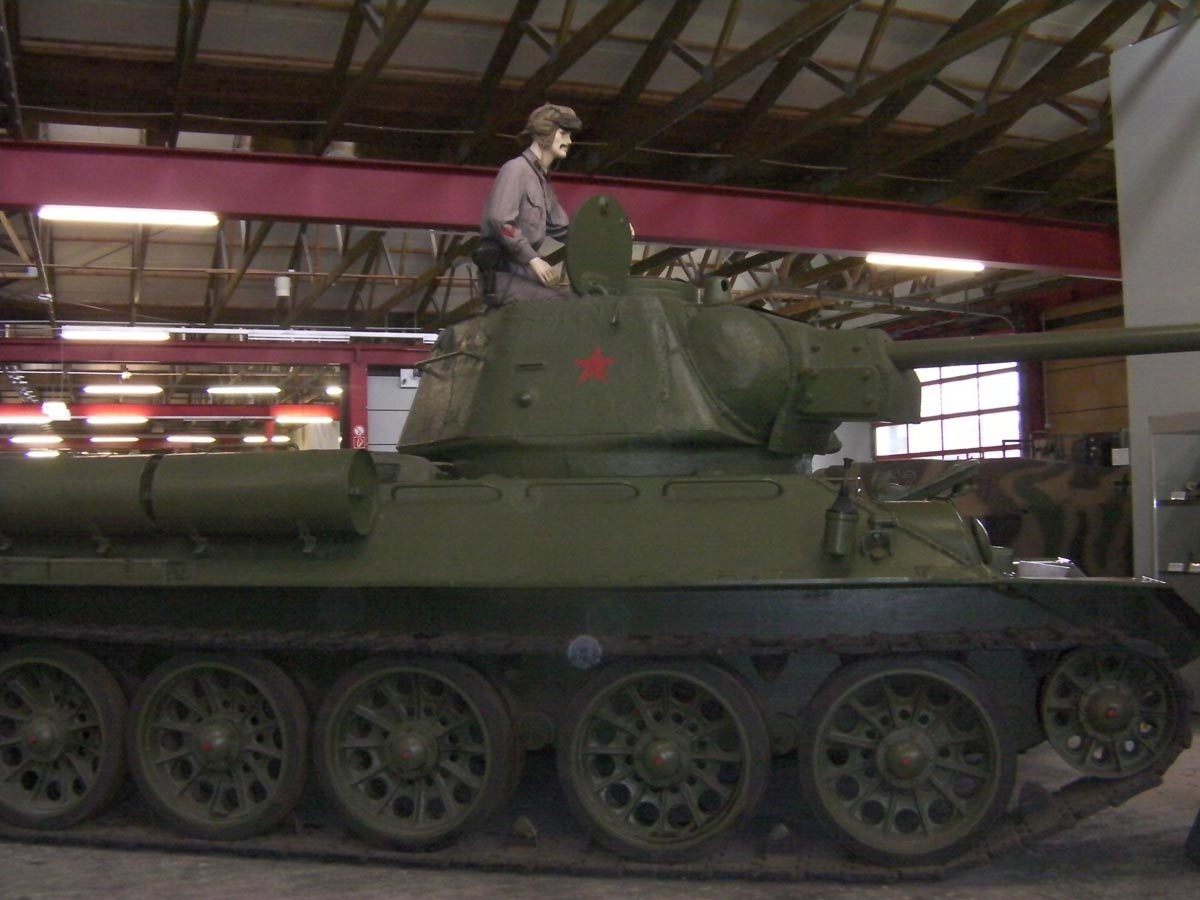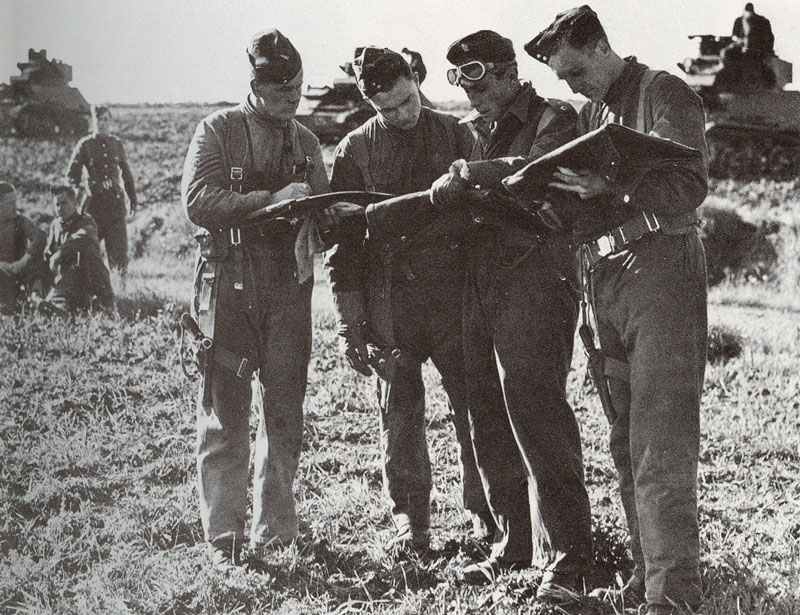British infantry rifle Lee-Enfield No.4 Mark 1 of WW2.
History, development, service, specifications, pictures and 3D model.
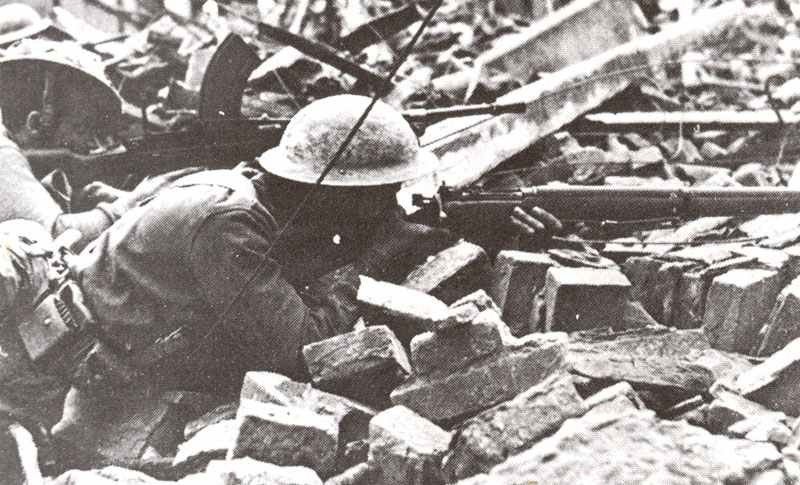
Lee-Enfield Rifles
Table of Contents
The Lee-Enfield rifle is a bolt-action, magazine-fed repeating rifle that served as the main firearm of British and Commonwealth military forces from 1895 until the 1950s.
Overview
History:
– Developed in 1895 as an evolution of the Lee-Metford rifle
– Named after James Paris Lee (designer) and the Royal Small Arms Factory in Enfield
Design features:
– 10-round magazine capacity
– Cock-on-closing bolt action
– Known for its smooth action and rapid fire capability
Variants:
– Short Magazine Lee-Enfield (SMLE)
– No. 4 Rifle
– No. 5 Rifle (Jungle Carbine)
Caliber:
– .303 British rimmed cartridge
Service:
– Used in both World Wars
– Remained in service with some countries into the 1980s
Performance:
– Effective range of about 550 yards (503 meters)
– Maximum range of about 3,000 yards (2,743 meters)
– Rate of fire: 20-30 aimed rounds per minute
Reputation:
– Known for reliability and accuracy
– Favored by many soldiers and marksmen
Legacy:
– Influenced later rifle designs
– Still used in some ceremonial roles and by civilian shooters
The Lee-Enfield rifle is considered one of the most successful and long-lived military bolt-action rifles in history.
Rifle No.4 Mark 1
Lee-Enfield rifle 303 No.4 Mark 1.
Type: British infantry rifle.
History
The well-known Lee-Enfield rifle began its service with the British Army in 1895 and ran into some 27 different models before being replaced by a self-loader in 1957. The most famous model was probably the Mark 3, the ‘Short’ Lee-Enfield, so-called because it introduced a new idea into military rifles. Prior to its introduction (in 1903) it was customary to produce two rifle type weapons, one a long rifle for infantry use and one a short carbine for cavalry and other mounted troops such as engineers and artillery. The ‘Short’ Lee-Enfield was shorter than a normal ‘long’ rifle, and longer than a carbine, and thus it was possible to standardize on one weapon for all branches of the Army.
Excellent as the Mark 3 was, it had some drawbacks, and the major one was that its manufacture was time-consuming, demanding much machining and handfitting. The other principal complaint was that the nature and location of the back sight (an open-topped U in front of the chamber) made it difficult to master quickly. Because of these points, work began immediately after the Armistice in 1918 to try to develop a rifle which retained the Lee-Enfield’s many virtues’ robustness, speed of operation, reliability – but which had better sights and was easier to make. The first attempt was the ‘No.1 Mark 5’ (a new system of nomenclature had been adopted after the war) which was little more than a Mark 3 with an aperture sight at the rear of the receiver. It was never adopted as a service weapon. The design was then simplified into the ‘No.1 Mark 6’ which used a heavier barrel, a new design of bolt, less woodwork, and a projecting muzzle on to which a spike bayonet could be fixed. This too was never adopted, but with a little more improvement it became the ‘No.4 Mark 1’, the standard WW2 rifle.
The No.4 rifle was much like the earlier Mark 6, but there were numerous small changes which simplified production. It was first issued late in 1939, though not officially adopted until 13 February 1941. Well over one million were made from November 1939 onwards during the Second World War, both in Britain and across the Atlantic in the USA and Canada, and after some misgivings by old soldiers who missed the immaculate finish of the Mark 3, the No.4 became liked and trusted in its turn. It remained in service as a sniping rifle, using 7.62 mm NATO ammunition.
Altogether over 5 million Lee-Enfield rifles from the model No 1 Mk III, Mk III*, No 4 Mk I, No 5 Mk I (100,000) and No 4 Mk I (T) sniper-rifles (25,000) were produced and used in both World Wars.
Pictures Lee-Enfield Rifle
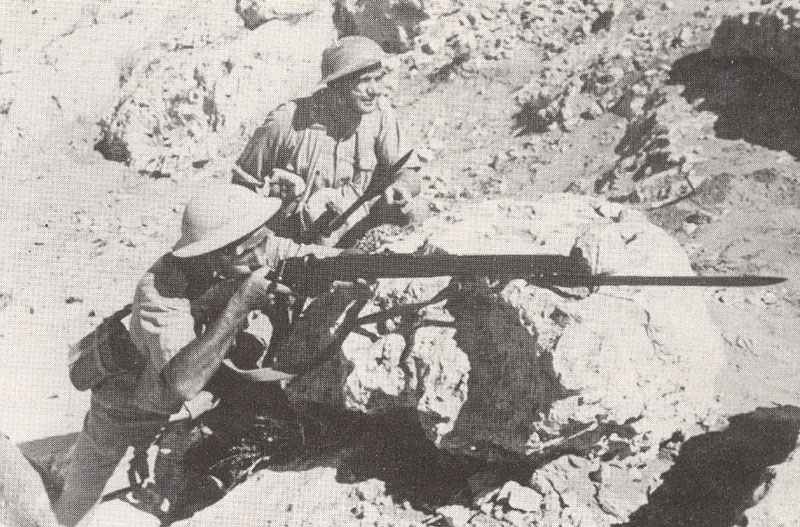
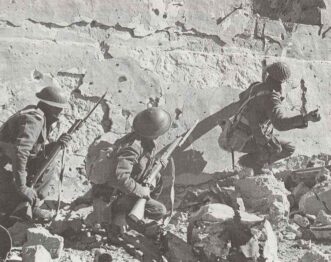
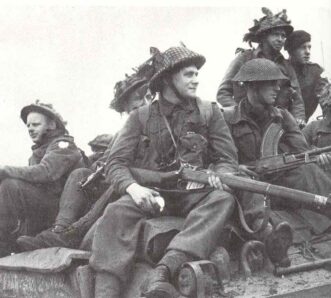
Specifications Lee Enfield rifle 303 No.4 Mark 1
Specifications:
Lee Enfield rifle 303 No.4 Mark 1 | Specification |
|---|---|
Type | Infantry rifle |
Caliber | .303in |
Length | 44.43in |
Weight | 9lb 1oz |
Barrel | 25.19 in long, 5 grooves, right hand twist |
Feed system | 10-round detachable box magazine |
System of operation | Lee turn-bolt |
Muzzle velocity | 2,400 feet/sec |
Rate of fire | up to 10 rounds in 10 seconds |
Service statistics:
Lee Enfield rifle 303 No.4 Mark 1 | figures |
|---|---|
Manufactures | Royal Ordonance Factory, Fazakerley; Royal Ordonance Factory, Maltby; Birmingham Small Arms Co., Tyseley; Savage Arms Co., Chicopee Falls, Mass., USA; Long Branch Arsenal, Ontario, Canada |
Early Production | since 1895; Mark 3 1903 |
Production delivery No.4 Mark 1 | 1941 |
Final delivery | 1957 |
Production figure in World War 2 | 5+ million |
3D Model Lee Enfield Rifle 303 No.4 Mark 1
References and literature
The Encyclopedia of Weapons of World War II (Chris Bishop)
The Encyclopedia of Infantry Weapons of World War II (Ian V.Hogg)
Infanterie im 2. Weltkrieg (J.B.King, John Batchelor)
Illustriertes Lexikon der Waffen im 1. und 2. Weltkrieg (V. Dolinek, V. Francev, J. Sach)




